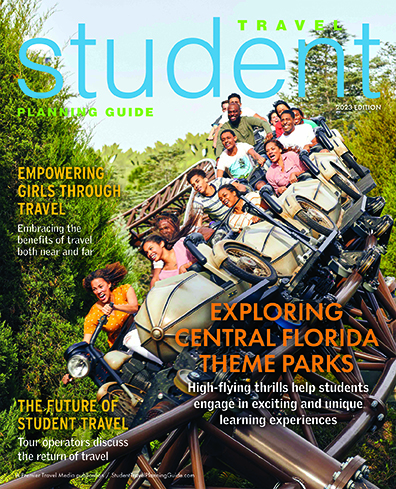Students in today’s world are tied to social media, and often their exposure to the world outside their hometown boundaries is gained through social media searches. Wouldn’t it be wonderful to have students put their phones down and walk side-by-side with each other in a physical rather than virtual world? Travel programs for students provide this opportunity.
School principals and school boards, especially in the public school sector, should strongly consider travel programs as part of the core curriculum. Travel programs go far beyond the classroom. A world where an elective course on travel is offered to every junior and high school student would surely be a popular choice. Imagine a group of highly motivated students sitting side by side in a class, learning about the world of travel and gaining insight and emotional connections to not only places but each other.
Depression in Teens
Statistically, 20 percent of all teens will experience depression before adulthood. The causes of teen depression are many, but one area that continues to gain attention is a perceived lack of opportunity, which is fed by social media.
Some teens today see other teens experiencing a world they cannot reach. They are viewing clips of teens attending a concert, riding a roller coaster in an amusement park or taking a picture in front of Ellis Island. Teens may lay awake in bed at night seeking solace and thinking of ways to bring attention to themselves. Now think of that same teen dreaming of the trip in which they are about to embark.
Travel experiences have a way of equalizing opportunity. It levels the playing field between those who have opportunity at their fingertips and those who do not. The student travel itinerary allows all to experience the same destination, at the same time.
I Didn’t Know You
Students pass by one another in school hallways, in the cafeteria or in class. But how many really get to know one another? Day after day they see the same faces, without ever knowing many of  the names or anything outside of what they see. Judgments take place based on dress, how someone carries themselves or physical attributes.
the names or anything outside of what they see. Judgments take place based on dress, how someone carries themselves or physical attributes.
Travel programs push past anonymity and develop social interaction. I’ve seen this happen time and time again on student travel programs. Students who never knew each other are now on a bus, traveling together, and talking to students they passed every day in the hall but never knew! Even if a friendship doesn’t develop, awareness does. Students become aware of each other, learn a bit about someone that was unknown and develop empathy and compassion for fellow human beings.
Equalizing the Playing Field: Sports in Schools vs. School Travel Programs
Travel programs cost money. This fact, along with concerns over liability and inclusion, prevent many school principals or school boards from developing or condoning travel programs. But think about this: school sports programs are sponsored and condoned by most schools. Travel is part of these programs, whether it’s the team on a bus traveling for an away game or an overnight trip when the team is competing for a state championship. These types of trips are celebrated in schools and often funded by schools. How are these trips any different than an educational or performance trip?
Sports programs are fantastic opportunities for students, but they touch only those few who have the talent in their particular sport. Educational or performance trips potentially would touch every student. Shouldn’t schools retool their thinking about equalizing (pardon the pun) the playing field?
Perhaps one day schools will develop a course on travel, and every student will have equal access to exploring the world outside their hometown. Until then, school trips can equalize opportunity, help develop positive social opportunities and maybe, just maybe, help fight one cause of teen depression.
By: Lisa Curtin






